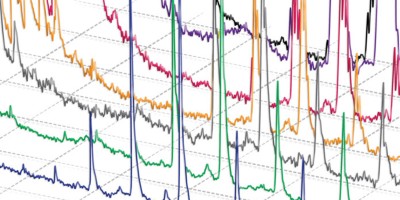Abstract
Major improvements in proteomic techniques in recent years have led to an increase in their application in all biological fields, including plant sciences. For all proteomic approaches, protein extraction and sample preparation are of utmost importance for optimal results; however, extraction of proteins from plant tissues represents a great challenge. Plant tissues usually contain relatively low amounts of proteins and high concentrations of proteases and compounds that potentially can limit tissue disintegration and interfere with subsequent protein separation and identification. An effective protein extraction protocol must also be adaptable to the great variation in the sets of secondary metabolites and potentially contaminating compounds that occurs between tissues (e.g., leaves, roots, fruit, seeds and stems) and between species. Here we present two basic protein extraction protocols that have successfully been used with diverse plant tissues, including recalcitrant tissues. The first method is based on phenol extraction coupled with ammonium acetate precipitation, and the second is based on trichloroacetic acid (TCA) precipitation. Both extraction protocols can be completed within 2 d.


Similar content being viewed by others
References
Wu, W.W., Wang, G., Baek, S.J. & Shen, R.F. Comparative study of three proteomic quantitative methods, DIGE, cICAT, and iTRAQ, using 2D gel- or LC-MALDI TOF/TOF. J. Proteome Res. 5, 651–658 (2006).
Rose, J.K., Bashir, S., Giovannoni, J.J., Jahn, M.M. & Saravanan, R.S. Tackling the plant proteome: practical approaches, hurdles and experimental tools. Plant J. 39, 715–733 (2004).
Saravanan, R.S. & Rose, J.K. A critical evaluation of sample extraction techniques for enhanced proteomic analysis of recalcitrant plant tissues. Proteomics 4, 2522–2532 (2004).
Rabilloud, T. Solubilization of proteins for electrophoretic analyses. Electrophoresis 17, 813–829 (1996).
Damerval, C., Devienne, D., Zivy, M. & Thiellement, H. Technical improvements in two-dimensional electrophoresis increase the level of genetic-variation detected in wheat-seedling proteins. Electrophoresis 7, 52–54 (1986).
Santoni, V.R., Bellini, C. & Caboche, M. Use of two-dimensional protein-pattern analysis for the characterization of Arabidopsis thaliana mutants. Planta 192, 557–566 (1994).
Carpentier, S.C. et al. Preparation of protein extracts from recalcitrant plant tissues: An evaluation of different methods for two-dimensional gel electrophoresis analysis. Proteomics 5, 2497–2507 (2005).
Wang, W. et al. Protein extraction for two-dimensional electrophoresis from olive leaf, a plant tissue containing high levels of interfering compounds. Electrophoresis 24, 2369–2375 (2003).
Hurkman, W.J. & Tanaka, C.K. Solubilization of plant membrane proteins for analysis by two-dimensional gel electrophoresis. Plant Physiol. 81, 802–806 (1986).
Meyer, Y., Grosset, J., Chartier, Y. & Cleyetmarel, J.C. Preparation by two-dimensional electrophoresis of proteins for antibody-production—antibodies against proteins whose synthesis is reduced by auxin in tobacco mesophyll protoplasts. Electrophoresis 9, 704–712 (1988).
Schuster, A.M. & Davies, E. Ribonucleic acid and protein metabolism in pea epicotyls: I. The aging process. Plant Physiol. 73, 809–816 (1983).
Usuda, H. & Shimogawara, K. Phosphate deficiency in maize. VI. Changes in the two-dimensional electrophoretic patterns of soluble proteins from second leaf blades associated with induced senescence. Plant Cell Physiol. 36, 1149–1155 (1995).
Mijnsbrugge, K.V., Meyermans, H., Van Montagu, M., Bauw, G. & Boerjan, W. Wood formation in poplar: identification, characterization, and seasonal variation of xylem proteins. Planta 210, 589–598 (2000).
Alban, A. et al. A novel experimental design for comparative two-dimensional gel analysis: Two-dimensional difference gel electrophoresis incorporating a pooled internal standard. Proteomics 3, 36–44 (2003).
Unlu, M., Morgan, M.E. & Minden, J.S. Difference gel electrophoresis: A single gel method for detecting changes in protein extracts. Electrophoresis 18, 2071–2077 (1997).
Gygi, S.P. et al. Quantitative analysis of complex protein mixtures using isotope-coded affinity tags. Nat. Biotech. 17, 994–999 (1999).
Ross, P.L. et al. Multiplexed protein quantitation in Saccharomyces cerevisiae using amine-reactive isobaric tagging reagents. Mol. Cell. Proteomics 3, 1154–1169 (2004).
Acknowledgements
Research in this area was supported by a grant to J.K.C.R. from the National Science Foundation (DBI:0606595). T.I. is supported by a Vaadia-BARD Postdoctoral Fellowship Award (No. FI-375-05) from BARD, The United States–Israel Binational Agricultural Research and Development Fund. C.M.B.D. is supported by a CNPq-Brazil Fellowship.
Author information
Authors and Affiliations
Corresponding author
Ethics declarations
Competing interests
The authors declare no competing financial interests.
Rights and permissions
About this article
Cite this article
Isaacson, T., Damasceno, C., Saravanan, R. et al. Sample extraction techniques for enhanced proteomic analysis of plant tissues. Nat Protoc 1, 769–774 (2006). https://doi.org/10.1038/nprot.2006.102
Published:
Issue Date:
DOI: https://doi.org/10.1038/nprot.2006.102
- Springer Nature Limited
This article is cited by
-
The transcription factor StMYB113 regulates light-induced greening by modulating steroidal glycoalkaloid biosynthesis in potatoes (Solanum tuberosum L.)
Horticulture Advances (2024)
-
Comparative proteomic analysis identified proteins and the phenylpropanoid biosynthesis pathway involved in the response to ABA treatment in cotton fiber development
Scientific Reports (2023)
-
Proteomics analysis of a tobacco variety resistant to brown spot disease and functional characterization of NbMLP423 in Nicotiana benthamiana
Molecular Biology Reports (2023)
-
Ammonium sulfate-based prefractionation improved proteome coverage and detection of carbonylated proteins in Arabidopsis thaliana leaf extract
Planta (2023)
-
Proteomics Studies Indicate Differential Regulation of Key Metabolism, Energy, and Stress-Responsive Proteins in Azadirachta indica Callus Upon Exposure to Salinity and Jasmonic Acid Treatments
Journal of Plant Growth Regulation (2023)





